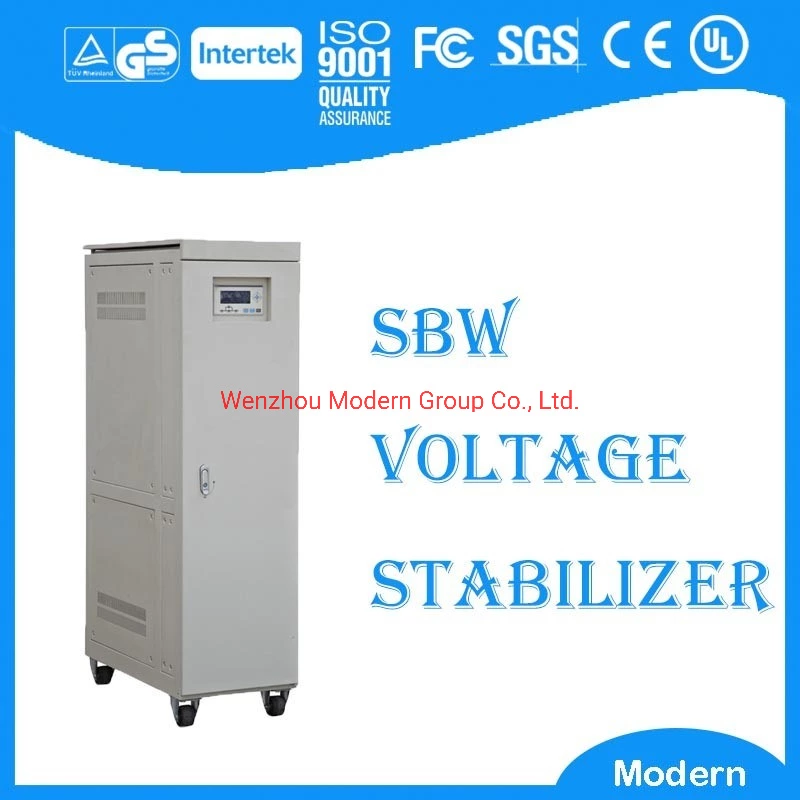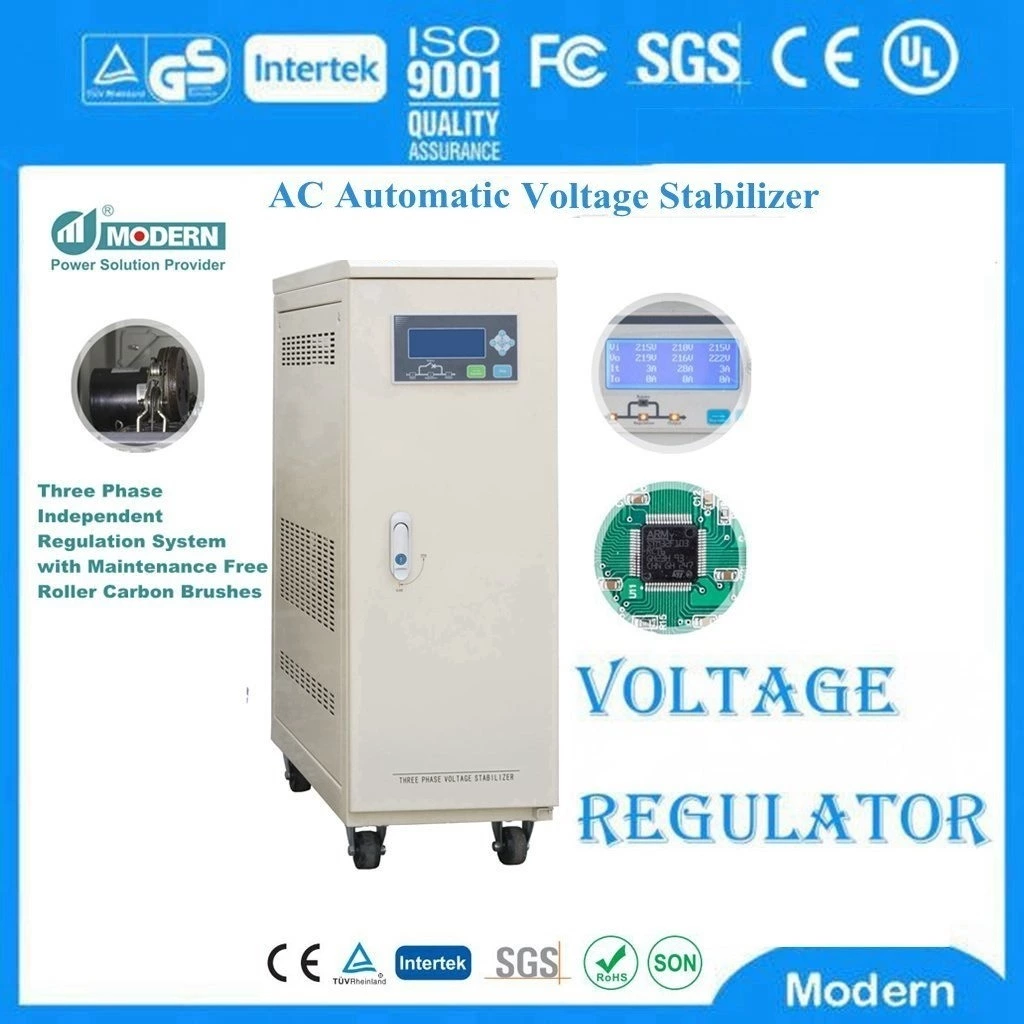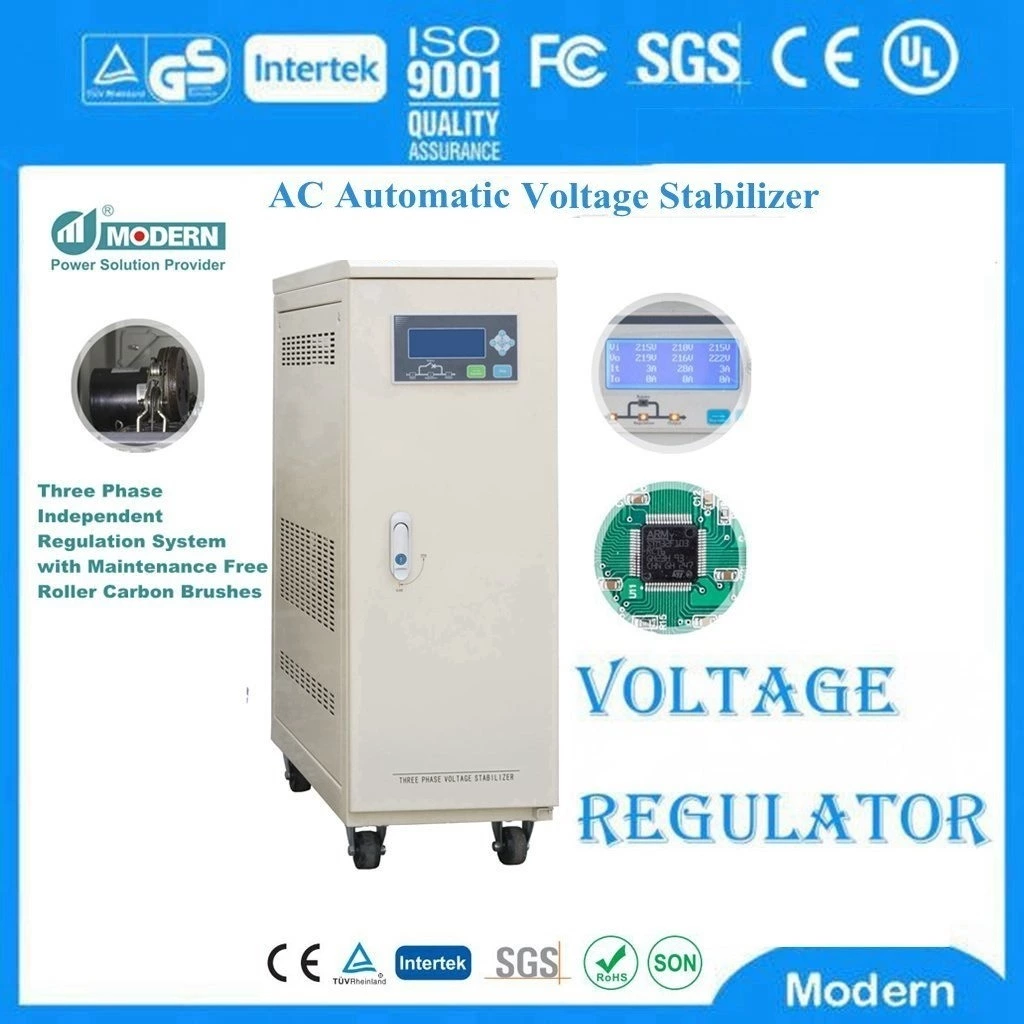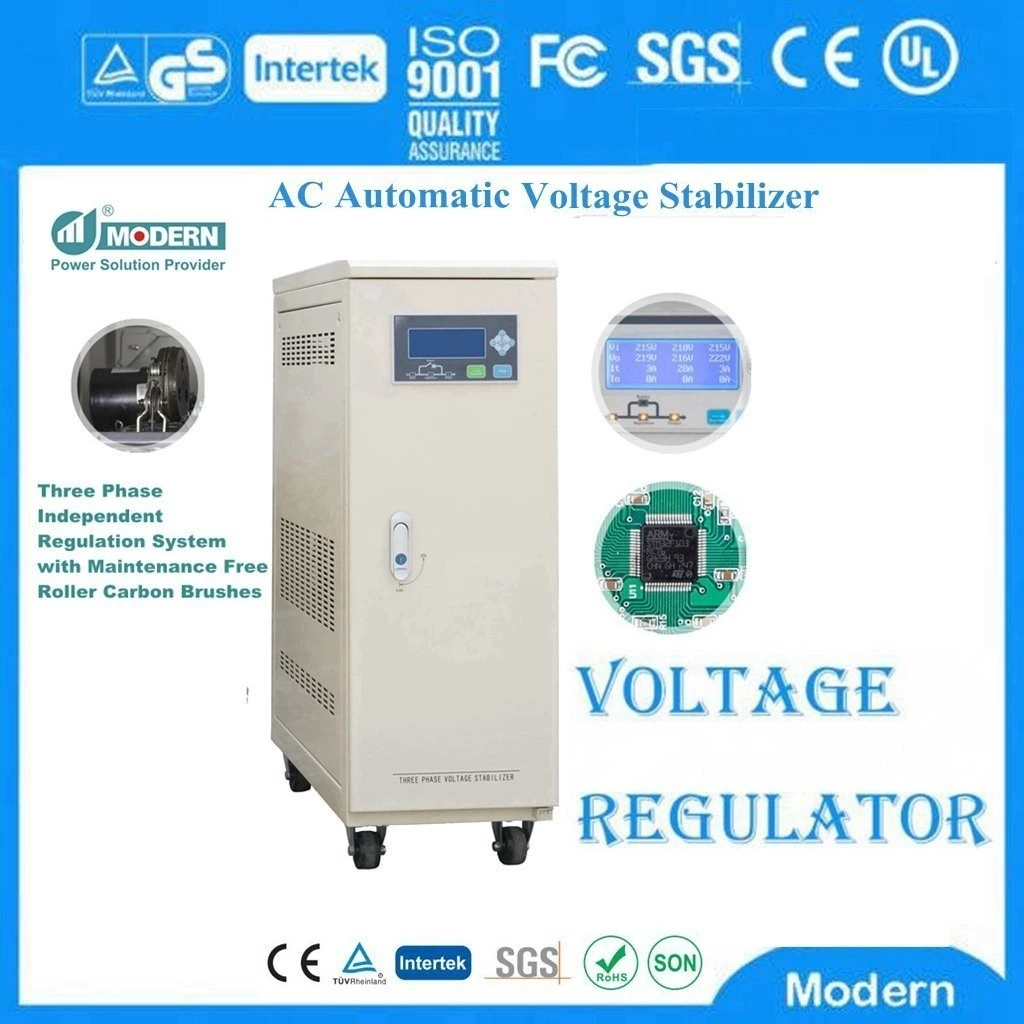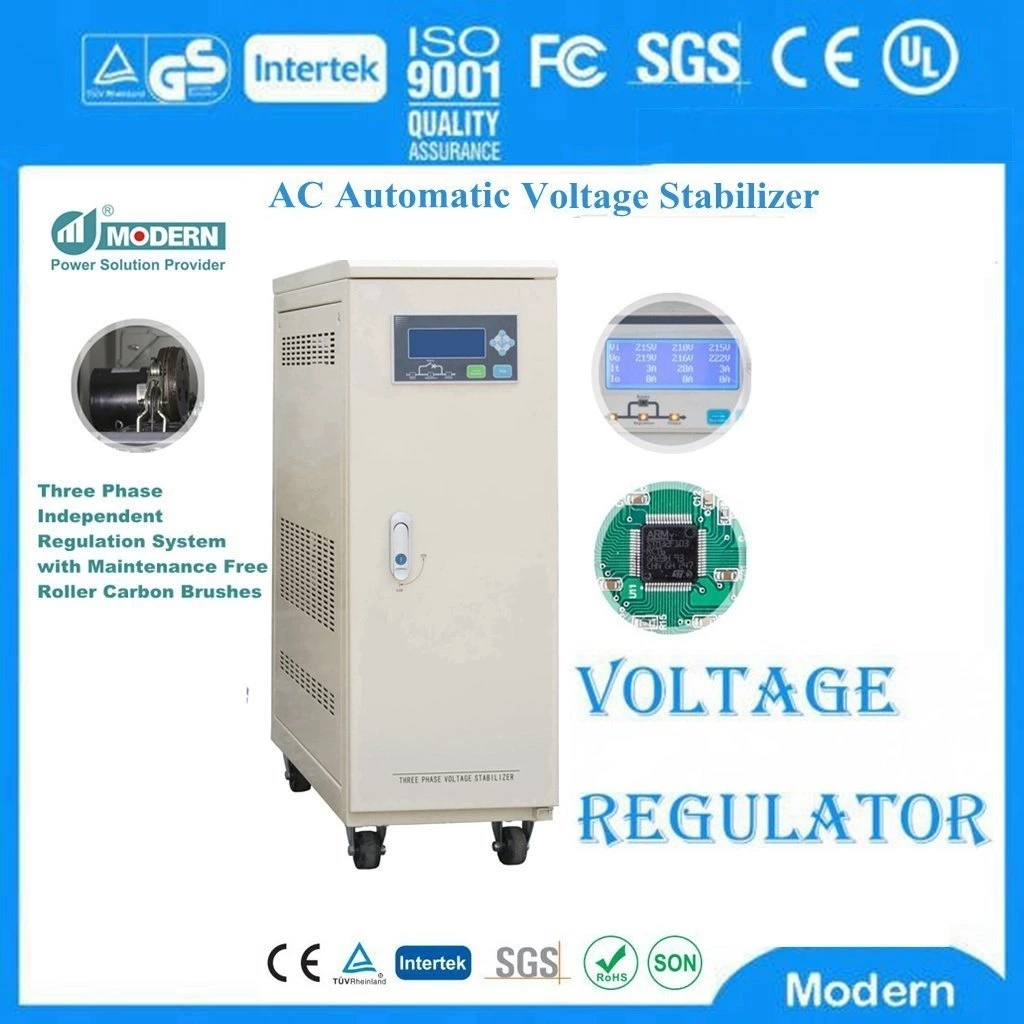Specific Implementation Method Of Voltage Optimizer
The following will combine various embodiments to clearly and completely explain the scheme of the present invention. The described embodiments are only embodiments used for narration and explanation of the present invention, not all embodiments. Based on these embodiments, the schemes obtained by technicians in this field without creative work belong to the protection scope of the present invention.
In the switching power supply system, the power supply usually uses power semiconductor devices as switching elements, and adjusts the output voltage by periodically switching on and off the switch and controlling the duty cycle of the switching elements. The switching power supply is mainly composed of an input circuit, a conversion circuit, an output circuit, and a control unit. Power conversion is its core part, which is mainly composed of a switching circuit, and a transformer is also applied in some occasions. In order to meet the requirements of high power density, the converter needs to work in a high-frequency state, and the switching transistor must use a crystal arm with high switching speed and short on and off time. Typical power switches include power thyristors, power field effect transistors, and insulated bipolar transistors. The control mode is divided into pulse width modulation, pulse width modulation and frequency modulation mixed modulation, pulse frequency modulation, etc., and pulse width modulation is commonly used. Switching mode power supply (SMPS) is divided into AC to AC (AC/AC) converters such as frequency converters and transformers according to the different input and output voltage forms; it is also divided into AC to DC (AC/DC) converters such as rectifiers; and it is divided into DC to AC (DC/AC) converters such as inverters; and it is divided into DC to DC (DC/DC) converters such as voltage converters and current converters. The switching mode power supply used in this application is mainly a DC to DC voltage converter. The switching noise caused by the switching operation when operating the switching mode power supply will cause electromagnetic interference in the electronic equipment including the switching mode power supply. Switching noise refers to the noise component and certain harmonic components caused by the switching operation frequency of the power switch of the configuration switching mode power supply. When electromagnetic interference occurs, the operation of the peripheral electronic devices of the power device including the switching mode power supply is disturbed. The conventional method for suppressing the occurrence of electromagnetic interference is to change the method of modulating the switching operation frequency. However, the frequency modulation method will produce an output voltage ripple modulated according to the switching operation frequency, and the output voltage ripple is superimposed on the output voltage ripple component caused by the ripple of the input voltage, thereby generating a larger output voltage ripple.
In the switching power supply system, the present application makes full use of the characteristics of the switching power supply itself, such as the DC to DC voltage converter regarded as a power optimizer, by adding inductor/capacitor elements to the voltage conversion circuit, coupling the output voltage of the switch operation generated by the voltage conversion circuit to the input or output end of the circuit itself, and further transmitting it to the common DC transmission line used to provide the total series voltage.
Voltage Optimiser is a DC to DC buck-boost voltage converter, and is also a single-component level battery maximum power tracking power device. After the power optimizer optimizes the maximum power of a single component, it is transmitted to the terminal inverter for DC to AC processing, and then supplied to local use or power generation and grid connection. The terminal inverter can usually be a pure inverter device without maximum power tracking or an inverter device equipped with secondary maximum power tracking. Mainstream power optimizers are mainly divided into series type and parallel type, and the topology is slightly different, such as BUCK or BOOST or BUCK-BOOST circuit.
The series power optimizer adopts the design concept of fixed voltage. Simply put, the inverter control board determines a stable DC bus voltage based on the AC terminal voltage, summarizes the maximum power collected by each series-connected optimizer, and then calculates the bus current and transmits it to the optimizer via wireless or power carrier. At this time, the voltage at the output of each optimizer is equal to the maximum power of the collected component divided by the bus current. When the component is blocked, the optimizer will redetermine the maximum output power value based on the volt-ampere curve and transmit it to the inverter control board via wireless or power carrier. Under the premise of maintaining the DC bus voltage unchanged, the control board recalculates the bus current (becomes smaller) and feeds it back to each optimizer. At this time, the power of the blocked component is reduced, and the optimizer will also reduce the voltage to confirm that the output current meets the standard. The optimizers of other unblocked components will increase the voltage to meet the output current standard. If the component is blocked too severely, the power optimizer will bypass the severely blocked component until it returns to a workable state. This regulation is actually a voltage supplement process, thereby providing the inverter with the most stable and optimized DC bus voltage.
The parallel power optimizer also uses a fixed voltage mode. The inverter determines the bus voltage based on the closed loop of DC and AC. Each optimizer boosts the voltage of its own output terminal to a specified value. At this time, the current input to the inverter is equivalent to the sum of the currents after the maximum power collected by each optimizer is divided by the rated voltage. Since the obstruction of thick clouds has little effect on the voltage of the components, but mainly affects the output current, parallel optimizers generally do not have frequent voltage mismatch adjustments, and because of the parallel relationship, the output currents do not affect each other, so this can indeed be regarded as an advantage of parallel optimizers over series optimizers. At the same time, if individual components are severely obstructed and the boost device cannot be started, the optimizer automatically disconnects and sends an error signal, and restarts until the obstruction problem is removed. However, compared with the series topology, the parallel topology also has the same defects as the microinverter, and the boost span is large. At present, the more popular open-circuit voltage of the components is about 38 volts, and the working voltage is about 30 volts. Under normal circumstances, the voltage step-up and voltage step-down range of the series topology is controlled between 10% and 30%, and the range is increased to 10%-90% under insufficient voltage. However, both the parallel topology and the micro inverter need to boost the component input voltage to a relatively high value, about 400V, which is obviously equivalent to a 10-fold increase. This is a more challenging working cycle for the boost device that is only controlled by the switch without using a transformer.
One of the biggest topological features of the power optimizer is to separate the functionality of the components and the inverter, which is different from the traditional photovoltaic system. It seems that the components are connected to the inverter through the optimizer, but in fact the components are only used to start the optimizer, and the optimizer collects the maximum power of the components and then cooperates with each other to provide the inverter function. Because the fixed voltage technology not only solves the problem of partial shading of the photovoltaic power generation system, but also for the system with multiple strings, the number of components in each string does not need to be equal, and even the orientation of each component in the same string group does not need to be the same. For a series optimizer, the open-circuit voltage after disconnection is only a tiny voltage of 1V. For a parallel optimizer, the open-circuit voltage after disconnection is at most the open-circuit voltage of the component, so it is also a leap forward for the safety performance and reliability of the power generation system.
In addition to the structural advantages of the circuit topology, the power optimizer also has inherent advantages in the maximum power point tracking algorithm. The traditional maximum power point tracking algorithm is basically based on two types: hill climbing method and logic measurement method. The advanced tracking method also uses a combination method: for example, the hill climbing method is combined with the constant range method, and the full scan method with a fixed time interval is used to find the maximum power point; there is also a combination of the slope polarity method and the conductance increment method, and the detection step control method is used to find the maximum power point. Under ideal test conditions, the accuracy of these algorithms can reach more than 99%. In fact, the biggest challenge at present is the multi-peak and light surge. Multi-peak means that there are multiple power peaks in the power-current or power-voltage curve of an array. There are many reasons for this. One of them is that some components are blocked and the bypass diodes are forward deflected, causing one-third of the cells to be bypassed, resulting in a reduction in the working voltage of the string group, which in turn causes a voltage mismatch in the array and multiple peaks. Or because of the blockage, the bypass diodes are still in the reverse deflection state and not started, and a current mismatch occurs in the same string, resulting in multiple peaks. Multiple peaks and sudden increases in light have a huge impact on many maximum power point algorithms. Due to their uncontrollable and variable nature, they will confuse the tracker's judgment of the detection direction and which peak is the maximum power point. In fact, the root cause of this problem is that there are too many connected components. Imagine if each optimizer is only connected to one component, each component has only two or three bypass diodes, and the components do not affect each other. This greatly reduces the difficulty of analyzing and tracking the maximum power point, and the logic editing of the controller is also very simple and accurate. Because it is only a 38 volt and 8.9 amp IV curve, the maximum power point tracking of the optimizer does not need to use traditional algorithms to track the maximum power point. There are currently two common methods. The first is the tangent point tracking method, and the second is a combination of resistance control method and voltage control method with secondary tracking. It is based on this advantage that the optimizer can have a 30% increase in production capacity compared to traditional inverters. In addition, unlike the limited AC power of microinverters, power optimizers can fully transmit the collected power to the inverter.
The power optimizer is not only compatible with all crystalline silicon panels, but also can be matched to some thin-film battery systems. The industry is also working hard to make the optimizer have a wider compatibility range. However, most microinverters are incompatible or functionally grounded, which makes them incompatible with some mainstream components on the market. At the same time, the input voltage range of the power optimizer is approximately between 5 volts and 50 volts, which ensures that even if the components are severely covered, the optimization circuit can still remain in the startup state and continue to work. The power optimizer can be matched with a third-party inverter, and communicate with the third-party inverter and regulate the system through an additional control box. The power optimizer or voltage conversion circuit is essentially a DC to DC converter, such as BUCK, BOOST and BUCK-BOOST circuits. It should be emphasized that any solution for maximum power tracking of photovoltaic cells in the prior art is also applicable to the voltage conversion circuit of this application. Common maximum power tracking methods include constant voltage method, conductance increment method, perturbation observation method, etc. This application will not elaborate on how the voltage conversion circuit performs maximum power tracking MPPT.
In the field of photovoltaic power generation, photovoltaic modules or photovoltaic cells PV are one of the core components of power generation. Solar panels are divided into monocrystalline silicon solar cells, polycrystalline silicon solar cells, amorphous silicon solar cells, etc. in the direction of mainstream technology. The number of battery modules used in large centralized photovoltaic power stations is huge, and the number of battery modules used in small distributed household power stations is relatively small. Since the service life required for silicon cells in this field is generally as high as more than 20 years, it is essential to monitor the long-term and durability of the panels. Many internal and external factors will lead to reduced power generation efficiency of photovoltaic modules, such as manufacturing differences or installation differences between photovoltaic modules themselves, or shadowing or maximum power tracking adaptation, which will cause inefficiency. Taking the typical shadow shielding as an example, if part of the photovoltaic modules are shielded by clouds, buildings, tree shadows, dirt and other similar situations, these modules will change from power sources to loads and no longer generate electricity. The local temperature of photovoltaic modules in places where the hot spot effect is serious may be high, and some may even exceed 150°C, resulting in the burning of local areas of the modules or the formation of dark spots, melting of solder joints, aging of packaging materials, glass cracking, corrosion and other permanent damage, which poses a great hidden danger to the long-term safety and reliability of photovoltaic modules. The problem that needs to be solved in photovoltaic power stations/systems is: to be able to observe the working status of each installed photovoltaic panel in real time, and to warn of abnormal conditions such as over-temperature, over-voltage, over-current and output short circuit of the battery. It is very meaningful to take emergency measures such as active safety shutdown or other measures for abnormal batteries. Whether it is a centralized photovoltaic power station or a distributed small power station, it is necessary to judge and identify those components with potential problems based on the working parameter data collected for photovoltaic modules.
In the field of photovoltaic power generation, photovoltaic modules or photovoltaic cells need to be connected in series to form a battery string group, and then the battery string group is connected in parallel to power equipment such as a combiner box or an inverter, which involves the installation of modules or batteries, which requires absolute safety. If the photovoltaic module has an abnormal situation such as overtemperature, overvoltage or overcurrent, we undoubtedly need to actively trigger the action of shutting down these abnormal photovoltaic modules. When the abnormal photovoltaic module exits the abnormal state and returns to the normal state, we need to connect these photovoltaic modules again, which also requires absolute safety. In addition, in some occasions, it is necessary to detect the power generation of the module or monitor the output power, which is the basis for judging the quality of the module. For example, if the power generation of the module is significantly reduced, it is likely that an abnormal power generation event has occurred, which is blocked by bird droppings, dust, buildings, tree shadows, clouds, etc., which requires us to clean the battery or change the installation orientation and other measures. Those skilled in the art know that monocrystalline silicon solar cells, polycrystalline silicon solar cells, amorphous silicon solar cells, etc. are all materials whose characteristics are prone to attenuation. It is necessary to monitor the attenuation degree of the module, which is extremely important for judging the quality of the battery. The problem is: we don't know how to identify abnormal components and normal components in a huge array of components. The following content will solve this problem. In many cases, we need to directly identify the cells or components with poor quality during the installation stage, and never allow cells with quality defects to be assembled/installed into the photovoltaic cell array. Otherwise, the cells with quality problems entering the photovoltaic cell array will lead to low power generation efficiency of the entire array. What's worse is that the abnormal voltage or current value of one or several problematic cells may cause the entire battery string to be damaged, causing greater losses.
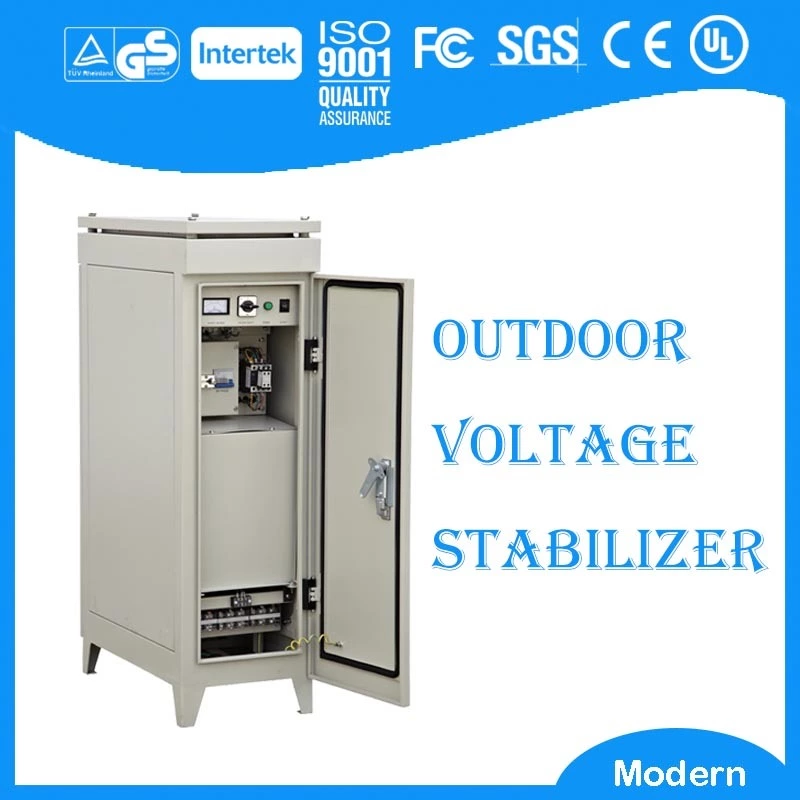
 Русский
Русский
 Français
Français
 Português
Português
 Español
Español
 اللغة العربية
اللغة العربية
